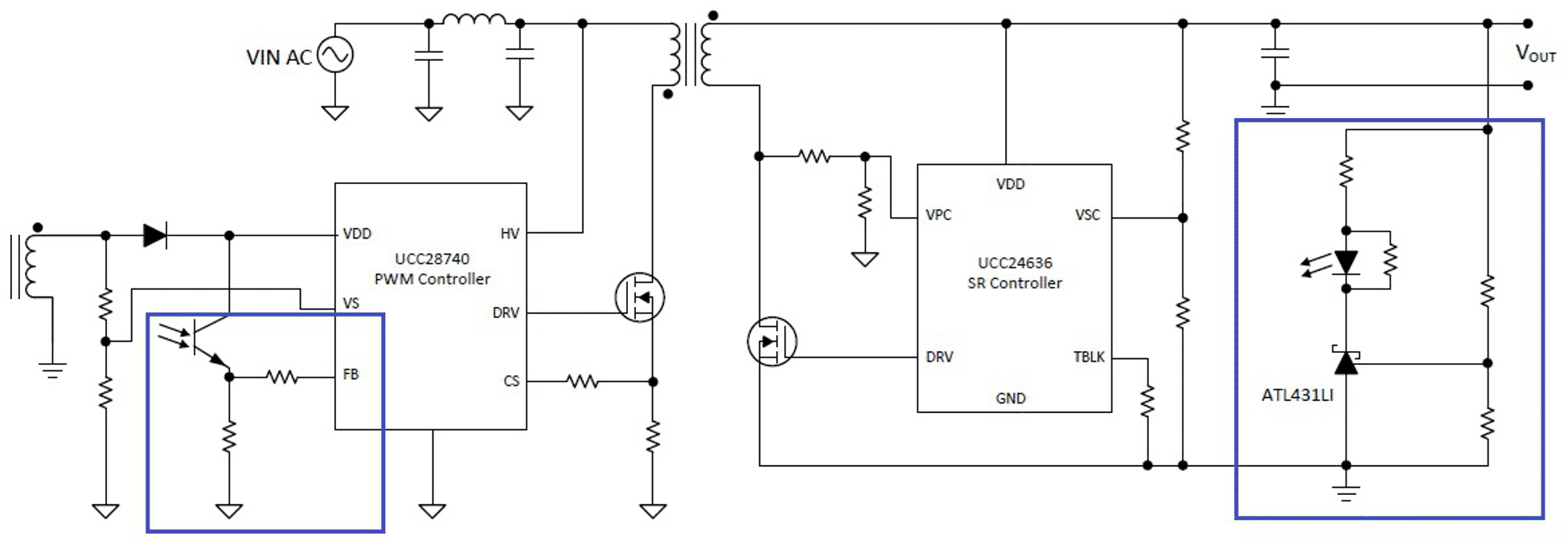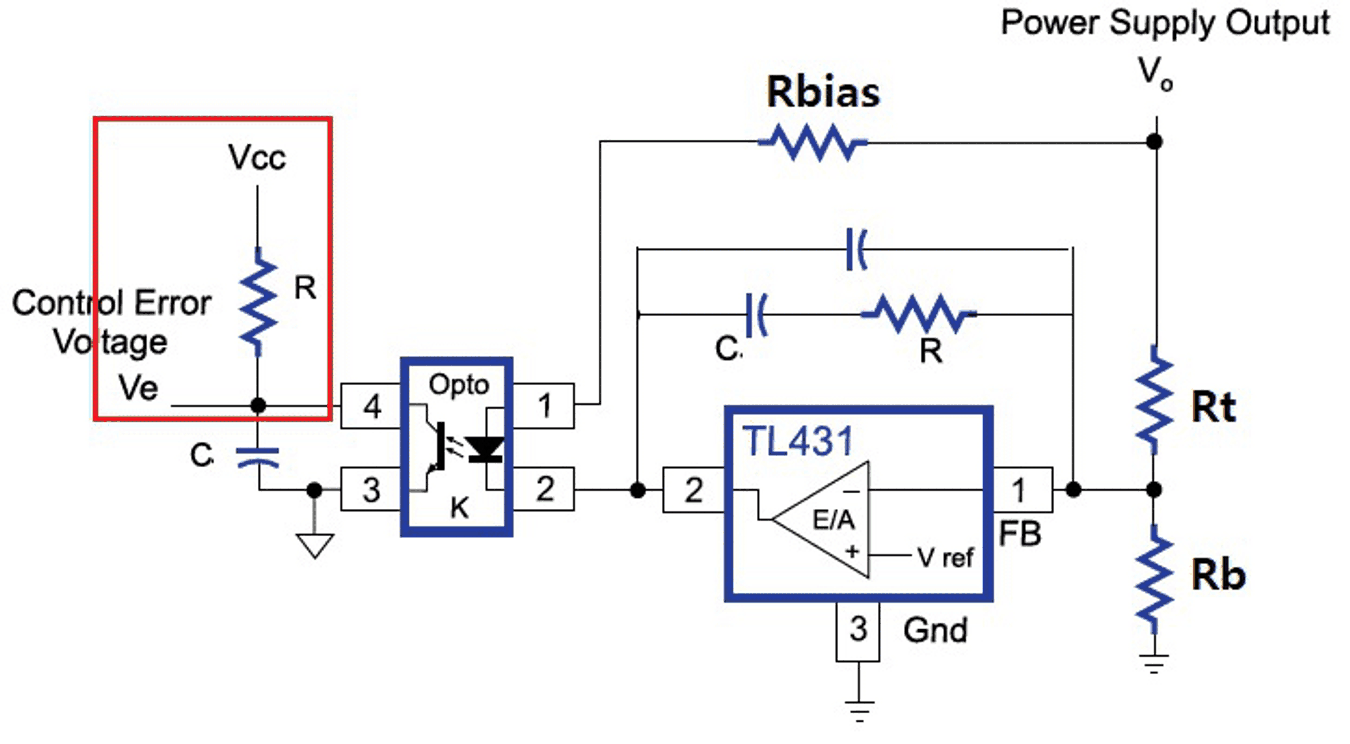SLVAF37 January 2021 ATL431LI
1.2 TL431 Solution with Isolation
TL431 has been used widely in isolated power supply applications and it provided design benefits of reducing the cost of feedback loop, taking up little board space within the performance tradeoff from the standard error amplifier and a precision reference.
 Figure 1-3 Flyback with Optocoupler
Isolation with TL431
Figure 1-3 Flyback with Optocoupler
Isolation with TL431Further detail from Figure 1-3, we now understand TL431 is powered from output of converter. And the amount of current flowing through the Rbias and the optocoupler diode to the cathode of TL431 are driving the gain and operation of the circuit. Figure 1-4 shows typical TL431 in conjunction with optocoupler for isolated feedback control.
 Figure 1-4 TL431 In Conjunction with
Optocoupler for Isolated Feedback
Figure 1-4 TL431 In Conjunction with
Optocoupler for Isolated FeedbackAs described, the bias current at both primary and secondary side are controlling the gain and frequency response of the circuit. However, it is very complicated analysis and even latest controllers have built the primary side bias, including current source and resistors, inside. Hence, we have options to follow design procedures for bias circuit of secondary side feedback.